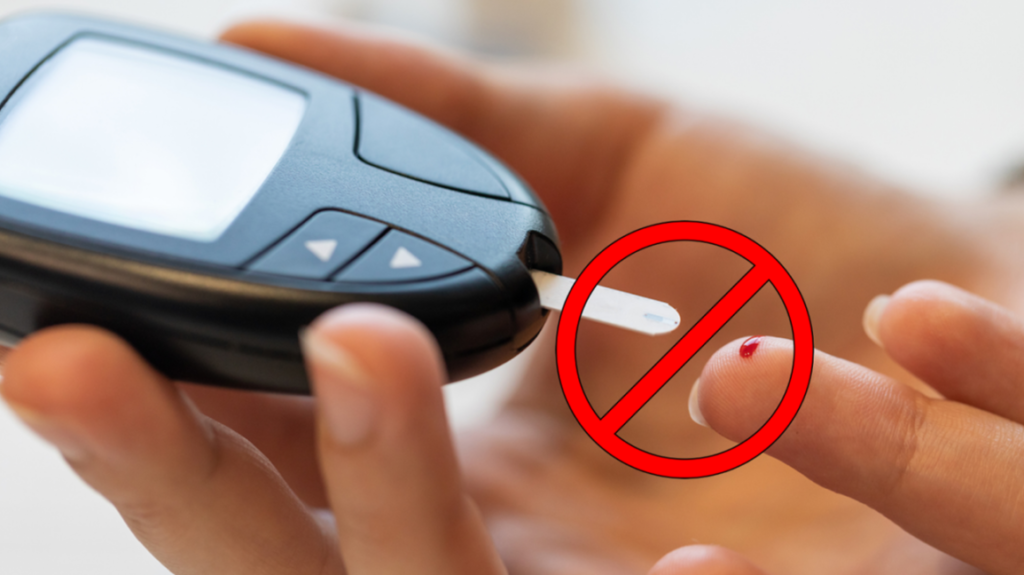Blog
Top Blood Sugar Monitors for Non-Invasive Testing
Monitoring blood sugar levels is a crucial part of managing diabetes and maintaining overall health. Traditionally, blood sugar testing involved pricking the finger to draw blood, which could be painful and inconvenient. However, advancements in technology have introduced non-invasive blood sugar monitors, making the process more comfortable, seamless, and accessible.
In this comprehensive guide, we’ll explore the top blood sugar monitors for non-invasive testing, their features, and how they are transforming diabetes management.
1. The Importance of Monitoring Blood Sugar
Monitoring blood sugar levels is vital for:
- Diabetes Management: Helps individuals adjust their diet, exercise, and medication.
- Preventing Complications: Reduces the risk of complications like nerve damage, kidney disease, and cardiovascular issues.
- Achieving Health Goals: Supports weight management and overall well-being.

Non-invasive monitors eliminate the need for needles, encouraging consistent testing and improving adherence to health management plans.
2. What Are Non-Invasive Blood Sugar Monitors?
Non-invasive blood sugar monitors measure glucose levels without drawing blood. They use advanced technologies like optical sensors, infrared light, and sweat analysis to detect glucose concentrations through the skin or other non-invasive methods.
Key Features of Non-Invasive Monitors:
- Painless Testing: Eliminates the discomfort of finger pricks.
- Real-Time Monitoring: Provides continuous glucose data.
- Convenience: Allows for discreet monitoring, ideal for busy lifestyles.
- Integration with Apps: Syncs with smartphones for data tracking and analysis.
3. Top Non-Invasive Blood Sugar Monitors
Here’s a list of the leading non-invasive blood sugar monitors that are transforming diabetes care:
1. Freestyle Libre 3
Features:
- Compact sensor worn on the back of the arm.
- Real-time glucose monitoring every minute.
- Pairs seamlessly with smartphones via the FreeStyle Libre app.
- Provides trends and alerts for high or low glucose levels.
Benefits:
- No finger pricks required for calibration.
- Accurate and reliable data for diabetes management.
- Discreet and comfortable to wear for up to 14 days.
Best For:
Individuals seeking a simple, continuous glucose monitoring (CGM) system with app connectivity.
2. Dexcom G7

Features:
- All-in-one sensor and transmitter for easy application.
- Sends glucose readings every 5 minutes to a smartphone or smartwatch.
- Customizable alerts for glucose trends.
- Integrates with popular fitness and health apps.
Benefits:
- Highly accurate, even during exercise or sleep.
- Compact and water-resistant design.
- No need for daily fingersticks.
Best For:
Active individuals or those requiring detailed glucose trend analysis.
3. GlucoTrack
Features:
- Uses ultrasonic, electromagnetic, and thermal technologies to measure glucose levels.
- Clips to the earlobe for quick and painless testing.
- Provides real-time readings and historical trends.
Benefits:
- Ideal for individuals uncomfortable with wearables.
- No consumables required, reducing long-term costs.
- Easy to use for older adults or those new to technology.
Best For:
Users seeking a device without adhesive sensors or frequent replacements.
4. Sugarmate CGM Companion
Features:
- Works as a companion app for CGM devices like Dexcom and Freestyle Libre.
- Provides voice alerts, trend graphs, and night mode for glucose monitoring.
- Compatible with Apple Watch and Amazon Alexa.
Benefits:
- Enhances the functionality of existing CGM devices.
- Easy-to-read analytics and insights.
- Great for tech-savvy users who want integrated solutions.
Best For:
Users already using CGM devices who want enhanced features and app integration.
5. Eversense E3 CGM
Features:
- The world’s first long-term CGM system with an implanted sensor.
- Provides accurate readings for up to 6 months.
- Smart transmitter vibrates to alert users of glucose changes.
- App integration for real-time monitoring and data sharing.
Benefits:
- No frequent sensor replacements.
- Reliable and discreet, with alerts for critical glucose levels.
- Long lifespan reduces maintenance.
Best For:
Individuals seeking a hassle-free, long-term solution for glucose monitoring.
6. K’Track Glucose
Features:
- Uses pain-free micro-needles to analyze interstitial fluid.
- Worn like a wristwatch for convenient and discreet monitoring.
- Syncs with a mobile app for real-time glucose data.
Benefits:
- Minimal discomfort compared to traditional methods.
- Stylish design doubles as a smartwatch.
- Tracks glucose trends and history.
Best For:
Users who prefer wearable devices with multi-functional capabilities.
7. Noninvasive Glucometer by HelaBio
Features:
- Optical technology measures blood glucose levels through the skin.
- Compact, handheld design.
- Provides instant readings without consumables.
Benefits:
- Affordable and user-friendly.
- No adhesives or invasive components.
- Suitable for on-the-go testing.
Best For:
Individuals looking for a budget-friendly and portable solution.
4. How to Choose the Right Non-Invasive Blood Sugar Monitor
When selecting a non-invasive glucose monitor, consider the following factors:
1. Accuracy:
- Choose devices with proven accuracy, especially for managing diabetes.
2. Wearability:
- Decide if you prefer a wearable device, a handheld unit, or an app-based system.
3. Connectivity:
- Look for gadgets that integrate with smartphones or smartwatches for easy tracking.
4. Maintenance Costs:
- Evaluate ongoing costs for sensor replacements, apps, or subscriptions.
5. Alerts and Notifications:
- Ensure the device provides real-time alerts for high or low glucose levels.
5. Benefits of Non-Invasive Blood Sugar Monitors
1. Painless and Comfortable Testing
- Eliminates the discomfort associated with finger pricks, encouraging frequent testing.
2. Continuous Monitoring
- Tracks glucose levels throughout the day and night, providing detailed trends.
3. Better Compliance
- Simplifies the monitoring process, making it easier to stay consistent.
4. Enhanced Diabetes Management
- Helps users make informed decisions about diet, exercise, and medication.
5. Improved Quality of Life
- Reduces anxiety and inconvenience, promoting a more active lifestyle.
6. Challenges and Limitations
While non-invasive glucose monitors offer significant advantages, they have some limitations:
1. Cost:
- Advanced devices may have higher upfront costs or require subscriptions.
2. Accuracy Variations:
- Some non-invasive methods may be less accurate than traditional blood testing.
3. Compatibility Issues:
- Certain devices may not integrate with all smartphones or health platforms.
4. Wearability Concerns:
- Adhesive sensors or implanted devices may cause irritation for some users.
7. Future Trends in Non-Invasive Blood Sugar Monitoring
The field of non-invasive glucose monitoring is rapidly evolving, with exciting developments on the horizon:
1. AI Integration:
- Artificial intelligence will provide more precise readings and personalized health recommendations.
2. Multi-Purpose Wearables:
- Future devices may combine glucose monitoring with fitness tracking and other health metrics.
3. Expanded Accessibility:
- Prices are expected to drop as technology becomes more widely adopted.
4. Smart Home Integration:
- Devices will sync seamlessly with other smart home gadgets for holistic health monitoring.
Conclusion
Non-invasive blood sugar monitors are transforming the way people manage diabetes and monitor glucose levels. With options ranging from wearable CGMs to handheld devices, these gadgets offer painless, accurate, and convenient solutions that improve quality of life.
By investing in the right non-invasive blood sugar monitor, you can take control of your health, reduce the discomfort of traditional testing methods, and achieve better outcomes. Explore the options listed above to find the perfect device for your needs and start your journey to healthier living today.

